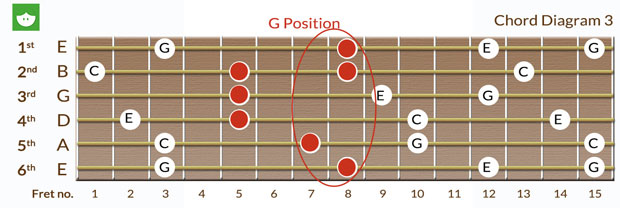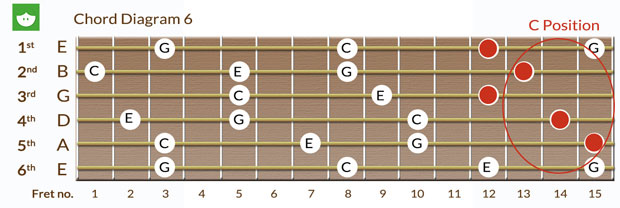Achieving Absolute Fretboard Mastery, Part 8
Get a practical understanding of the CAGED system so you can start applying it in your own playing.

Hey, guys. Welcome back to my Absolute Fretboard Mastery series. In this month’s edition of the column we’re going to be delving into a very useful visual technique called the CAGED chord system.
There are quite a few ways of approaching the CAGED chord system, but what I’m going to try to do is keep it as simple as possible and give you a practical understanding of the system so you can start applying it in your own playing.
When most people start learning guitar, the first chords that they learn are often the A, C, D, E and G open chords.
And the CAGED chord system is a chordal shape that can be used to navigate the fretboard using the C, A, G, E and D open-chord shapes, in that particular order, to ultimately be able to spot any major chord all across your fretboard.
Let’s start off by learning the CAGED chord system in the key of C so that you can bridge this theory with what we learned about the C major scale in last month’s lesson.
What I want you to do first is play a C major chord in its first open position:

In terms of the CAGED chord system, this is the first or “C” position. The next position in the system is the “A” position. So the next step in the system is to move up to the third fret and play a fifth string C major bar chord. Which, as you should know by now, uses the “A” chord shape:
All the latest guitar news, interviews, lessons, reviews, deals and more, direct to your inbox!
- You also can keep in mind at this point that if you ever play a fifth-string barre chord, the “C” position of the chord is to the left.
The next position of the C chord in the CAGED system, which is the “G” position, looks like this:

Something I should mention at this point is that the first step here is in understanding how a chord is spread out over these five positions across the fretboard. Actually playing these chords might take some getting used to since they’re fairly foreign.
The next position of C is the “E” shape in the CAGED system, and that looks like this:

This is a position that should look familiar because it is, in fact, the sixth-string barre chord.
The fifth position of the C chord in the CAGED chord system is the “D” position, which looks like this:

And then we go back to the “C” position for a C chord, which is one octave higher than our starting chord.

And that’s how you play the same chord across the fretboard using these five chordal shapes; which is what the CAGED system is all about.
This might seem pretty complicated at first, so I don’t want you to make things harder for yourself by thinking you need to learn each and every chord across the fretboard using the CAGED system right away. Instead of trying to learn seven different chords in the CAGED system off the bat, start off by absolutely mastering one chord until you can easily spot it and play it across the fretboard.
Once you’ve done this, using the CAGED chord system for any other chord becomes a cinch. If you know your sixth-string barre chords (and, if you’ve been following this series, you should), you’ll know that whenever you play a sixth-string barre chord, which is an “E” shape in the CAGED system, your “G” shape is below you and the “D” shape is above you.
So if we were to take an A chord, the “E," “G” and “D” positions would look like this:

And in the same way, when you play any fifth-string barre chord, you’ll know that according to the CAGED system, the “C” shape is below you and the “G” shape of your chord is above you. Which means as long as you know your sixth- and fifth-string barre chords, you pretty much have the CAGED system covered.
So, for example, if you needed to figure out the CAGED positions of the G chord, the first thing you need to do is figure out the lowest position of the G chord you can play, which in this case is the open G chord. Then you’ll know that next you’ll have a G chord in the “E” position and a “D” position and so on and so forth. The other shortcut is to simply find a G sixth- or fifth-string barre chord and figure out the surrounding CAGED positions of the chord.
Remember, the point of this month’s lesson isn’t to be able to play one chord all over the fretboard. There's a much bigger picture to this that we will get into next month. For now, master this concept of the CAGED chord system until you’re able to visualize any chord across your fretboard with ease.
Steve Stine is a longtime and sought-after guitar teacher who is professor of Modern Guitar Studies at North Dakota State University. Over the last 30 years, he has taught thousands of students, including established touring musicians, and released numerous video guitar lesson courses via established publishers. A resident of Fargo, North Dakota, today he is more accessible than ever before through the convenience of live online guitar lessons at Lessonface.com.
